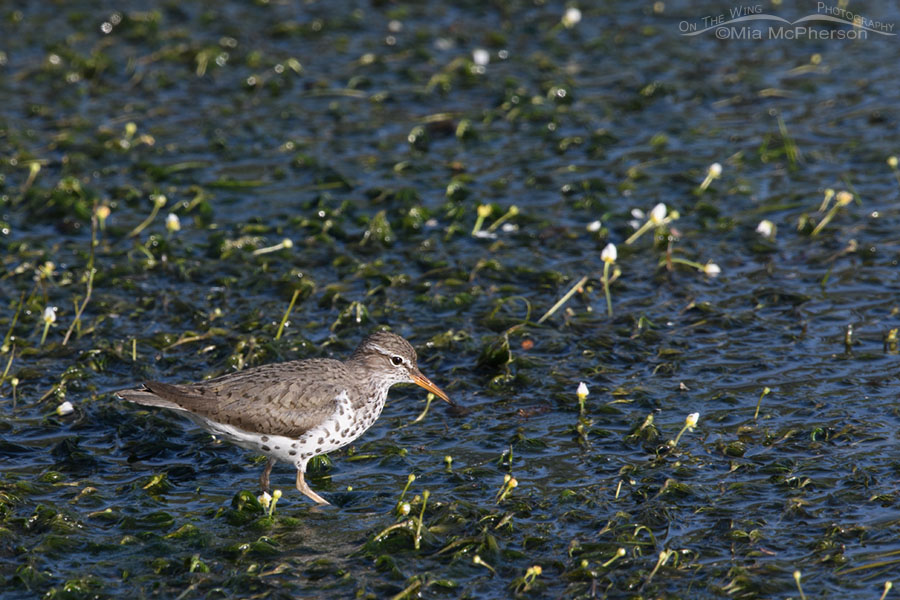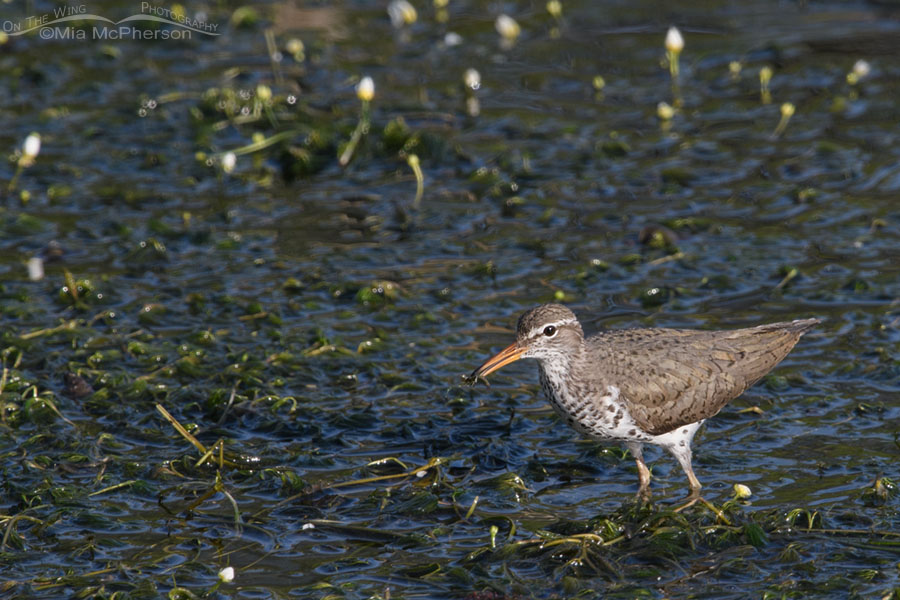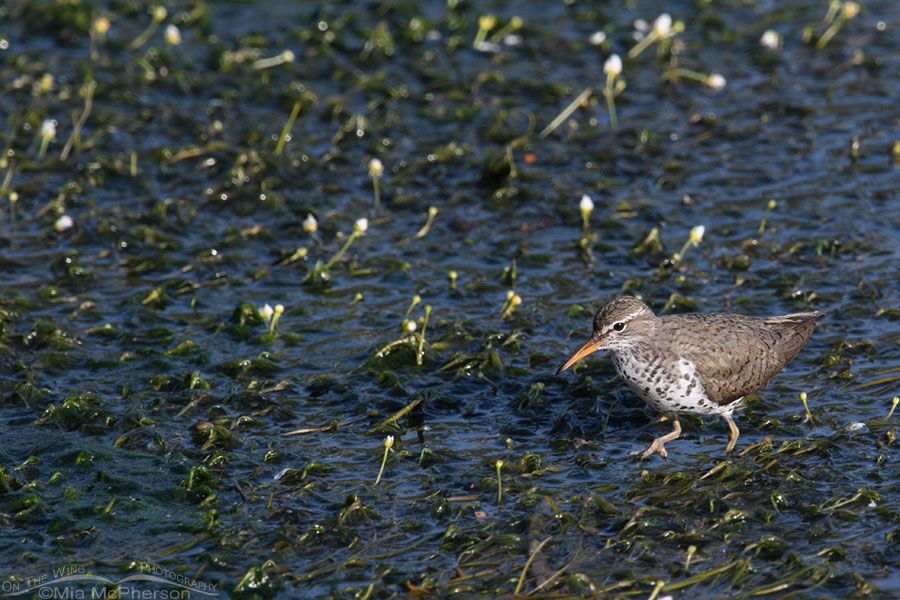 Adult Spotted Sandpiper foraging in White Water Crowfoot – Nikon D500, f7.1, 1/800, ISO 500, -0.7 EV, Nikkor 500mm VR with 1.4x TC, natural light
Adult Spotted Sandpiper foraging in White Water Crowfoot – Nikon D500, f7.1, 1/800, ISO 500, -0.7 EV, Nikkor 500mm VR with 1.4x TC, natural light
Two days ago I photographed an adult Spotted Sandpiper foraging in White Water Crowfoot in a creek in the Wasatch Mountains. I see as many as three Spotted Sandpipers reliably in this area but most of the time it is just one or two adults. It is a little bit early in the breeding season to see Spotted Sandpiper chicks though I have been watching for them.
Because of our continuing drought conditions in northern Utah the creek is lower than I have ever seen it flowing in June. Also because of the drought sandbars in this creek have started to grow grasses on small sand spits that are usually still under water at this time of the year and that will make photographing any of the sandpiper chicks I see harder this year.
 Spotted Sandpiper with prey in its bill – Nikon D500, f7.1, 1/640, ISO 500, -0.7 EV, Nikkor 500mm VR with 1.4x TC, natural light
Spotted Sandpiper with prey in its bill – Nikon D500, f7.1, 1/640, ISO 500, -0.7 EV, Nikkor 500mm VR with 1.4x TC, natural light
I’ve blown this photo up as far as I could on my computer screen but could not tell what they prey was that the Spotted Sandpiper adult had in its bill. My best guess would be a dragonfly or nymph or some type of stonefly or mayfly nymph. The matted foliage of the White Water Crowfoot would protect the nymphs from fish getting to them but not the sandpipers when the water is as low as it is flowing now.
 Adult Spotted Sandpiper foraging in a mountain creek – Nikon D500, f7.1, 1/800, ISO 500, -0.7 EV, Nikkor 500mm VR with 1.4x TC, natural light
Adult Spotted Sandpiper foraging in a mountain creek – Nikon D500, f7.1, 1/800, ISO 500, -0.7 EV, Nikkor 500mm VR with 1.4x TC, natural light
This Spotted Sandpiper bobbed its bottom as if foraged in the aquatic wildflowers and called a few times. When it was done foraging in the area it flew past me and headed south towards another section of the creek.
I do wonder if our drought continues if I will still see the Spotted Sandpipers near the creek. Like many birds they require specific habitat and conditions to breed and nest and those conditions have been changing before my very eyes over the past several years. Time will tell.
It has been a week since I was bitten by the Deer Fly that caused my hand to swell, hurt, and itch. Today the only symptom I still have is that top of my left hand is still itchy but I believe that is because my hand swelled so much that it stretched my skin which caused tiny cracks. I’ll continue to apply lotion to help with that.
Life is good.
Happy Father’s Day!
Mia
Click here to see more of my Spotted Sandpiper photos plus facts and information about this species.


Very interesting photos… something i’ve never had the opportunity to see. Glad to hear your hand is well on its way to normal.
Very nice including the crowfoot blooms. Yes it is dry everywhere. I fear we are in a cycle that will feed upon it’s self, dry causing hotter- hotter causing dryer.
I am glad your hand is better.
Add me to those worrying about your drought.. Big time.
I’m glad you got to spend some time with the sandpiper. I hope they have a successful breeding season, even with the drought, although I know that the chances are diminishing.
Glad your hand is doing better too. 🙂
Enjoyed your spotted Sandpiper shots. Most the time here they are blending with the mud in one of the bays. The water levels have now risen to the point where there are no muddy sandbars left. Mia, I don’t know if the cream called Atrac-Tain by Coloplast is available there but it is absolutely the best and would heal up those little cracks in no time. We used it when I worked in health care with amazing results.
I worry about your drought (or any drought) and the ramifications on wildlife.